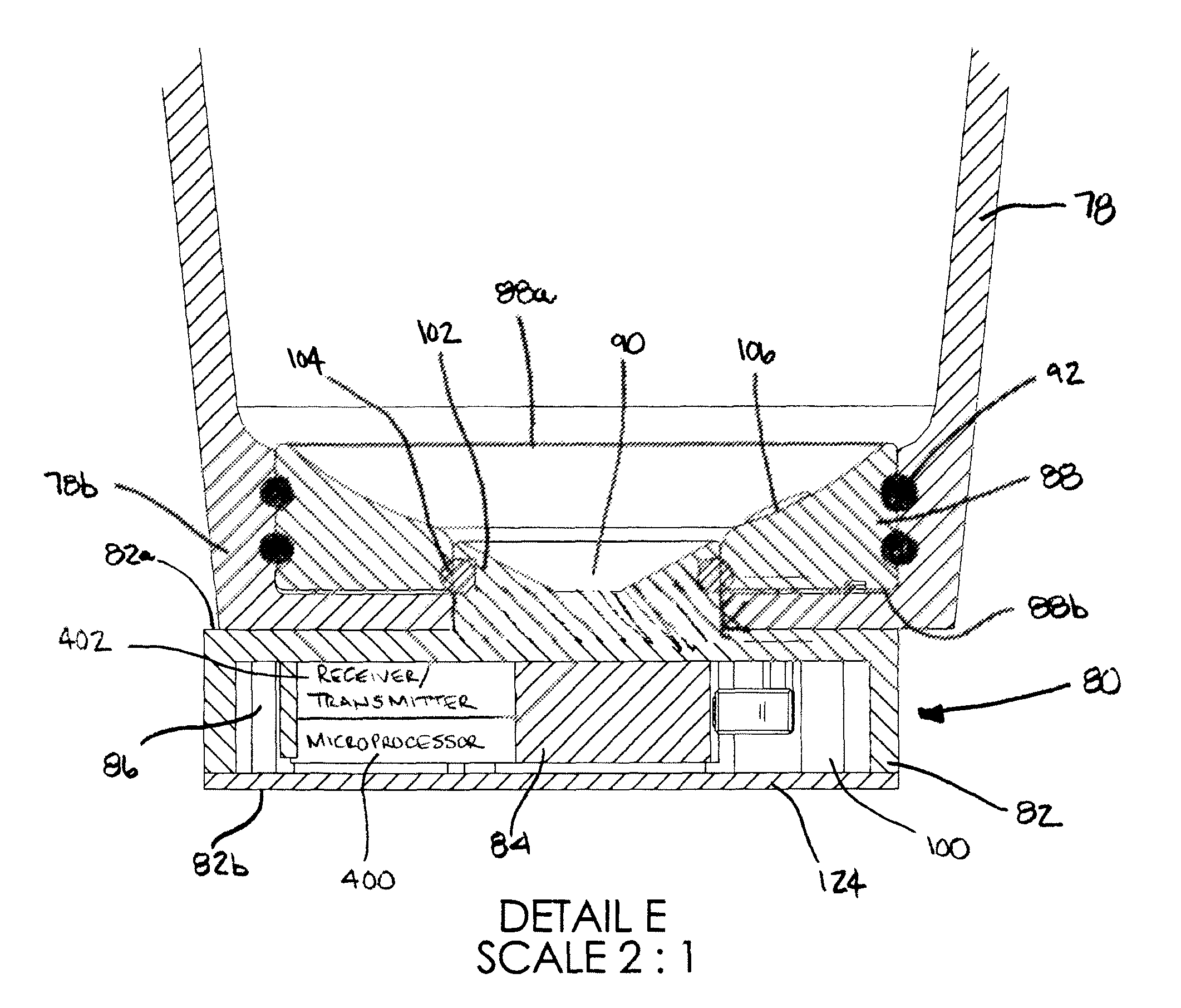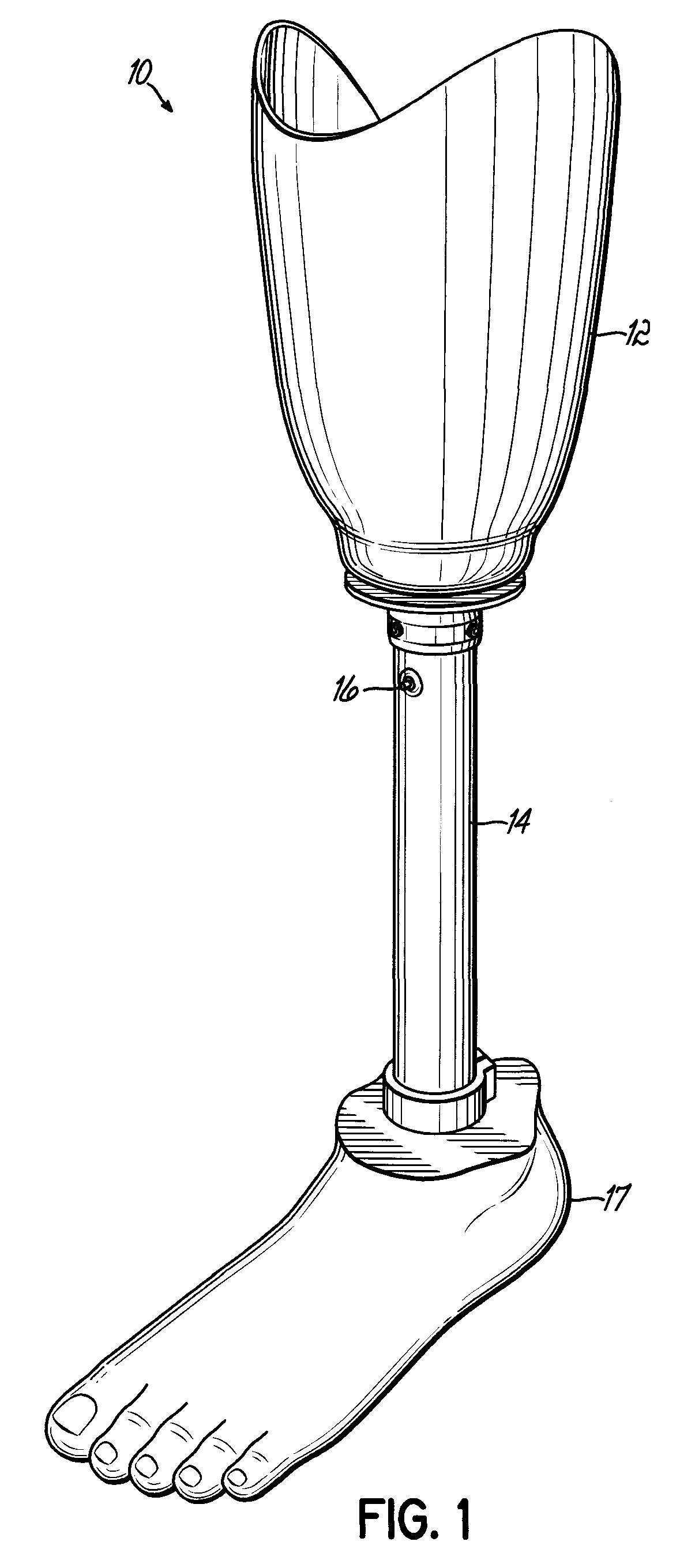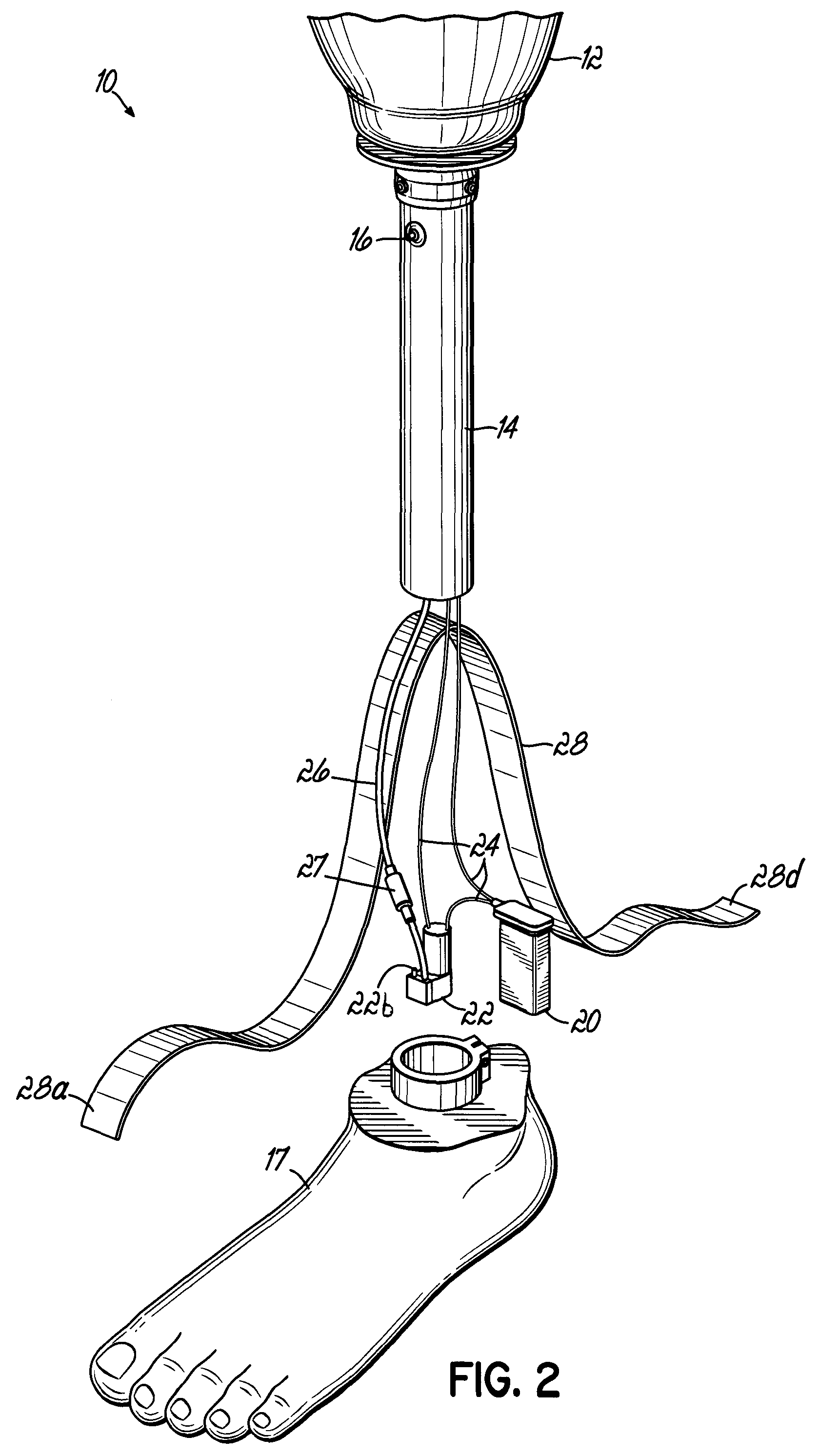Prosthetic device utilizing electric vacuum pump
a technology of electric vacuum pump and prosthetic device, which is applied in the field of prosthetic device utilizing electric vacuum pump, can solve the problems of inability to remove, heavy weight of weight activated pump, and difficulty in securing artificial limbs, etc., and achieves the effects of compact size, minimal power consumption, and convenient us
- Summary
- Abstract
- Description
- Claims
- Application Information
AI Technical Summary
Benefits of technology
Problems solved by technology
Method used
Image
Examples
Embodiment Construction
)
[0041]FIG. 1 illustrates one embodiment of a prosthesis 10 in accordance with principles of the present invention. The prosthesis includes a socket 12 for receiving an amputee's residual limb, a column (pylon) 14, which is typically a cylindrical section of lightweight metal such as aluminum, and an artificial foot 17. As can be seen in FIG. 1, the pylon 14 includes a vacuum actuator button 16 used to actuate an electric vacuum pump within the pylon that draws air from the socket 12 and, as a result, draws the residual limb into intimate contact with the interior of the socket 12.
[0042]FIG. 2 illustrates the prosthesis of FIG. 1 in a disassembled state to show the component parts within the pylon 14. Internal to the pylon 14 is a power source 20, such as a capacitor or a conventional 9-volt battery, a vacuum pump 22, and electrical lines 24 for delivering electrical power from power source 20 to vacuum pump 22, and vacuum line 26 for drawing vacuum from socket 12 through a check va...
PUM
 Login to View More
Login to View More Abstract
Description
Claims
Application Information
 Login to View More
Login to View More - R&D
- Intellectual Property
- Life Sciences
- Materials
- Tech Scout
- Unparalleled Data Quality
- Higher Quality Content
- 60% Fewer Hallucinations
Browse by: Latest US Patents, China's latest patents, Technical Efficacy Thesaurus, Application Domain, Technology Topic, Popular Technical Reports.
© 2025 PatSnap. All rights reserved.Legal|Privacy policy|Modern Slavery Act Transparency Statement|Sitemap|About US| Contact US: help@patsnap.com



